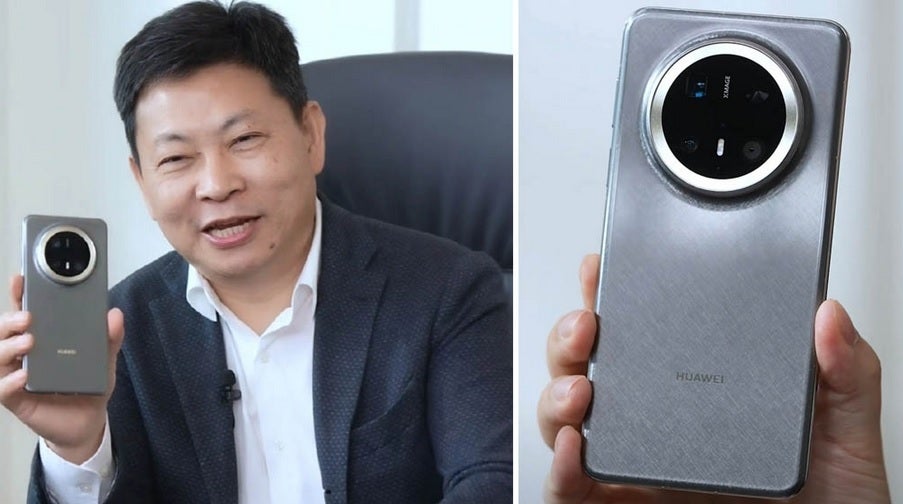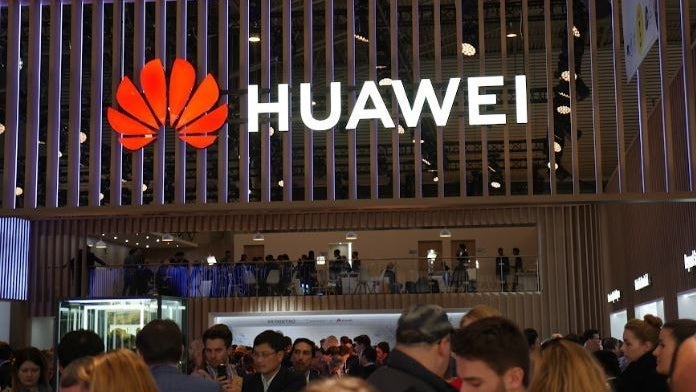Huawei’s Richard Yu has been leaking multiple Huawei phones
However, just a few days ago Yu decided to gives us a little look at the Mate 70 Pro+. He showed the back of the phone on his WeChat account revealing the round camera housing on the “Gold and Silver Brocade” rear panel. The executive noted that the phone uses a special material for the back of the flagship model. A close look reveals the brushed pattern on the back with silver and gold threads.
Huawei’s Richard Yu leaks the rear panel of the upcoming Mate 70 Pro+. | Image credit-Huawei Central
The camera housing
has a thick silver rim and four lens openings. Huawei’s in-house Xmage photography brand is printed vertically at the top of the circular camera housing. The phone is held by Yu at an angle in one photo that shows off an extra large power button that most likely carries an integrated fingerprint scanner.
“Many people wanted to see if I showed my phone at the auto show. Everyone is particularly looking forward to what the Mate 70 looks like. Today I will not hide it and show it to everyone.”-Yu Chengdong, Chairman, Huawei’s Consumer Business Group
While he didn’t reveal the front of the Mate 70 Pro+ at first, on Friday
Yu flipped the script by showing the front of the phone on camera. The device has three horizontal punch-hole cutouts at the top of the display. Huawei is the only phone manufacturer to use this design which it debuted last year with the Mate 60 series. The Mate 70 Pro+ has a quad-curved display that appears bezel-less to the eye.
Yu holding the Mate 70 Pro+ with the unique three front-facing horizontal cut outs. | Image credit-Weibo
The phone is
expected to be officially introduced on November 26th and the Mate 70 Pro+ will reportedly be available with 16GB of RAM and 1TB of storage. The top-of-the-line variant will be the Mate 70 RS Ultimate Edition and
Huawei will also produce the Mate 70 and Mate 70 Pro. The models could be powered by the Kirin 9100. The application processor will be produced by China’s largest foundry, SMIC, which is also the third-largest foundry in the world following TSMC and Samsung Foundry.
U.S. lawmakers set to go crazy if the processor running the Mate 70 line is made using a 6nm node or lower
The rumor mill has been all over the place trying to come up with the process node that will be used to manufacture the chip and most likely the component will be built with SMIC’s second-generation 7nm node. No Chinese company is allowed to be shipped the Extreme Ultraviolet (EUV) Lithography machine needed to build chips under 7nm.
Last year’s surprise unveiling of the Mate 60 Pro stunned the world since Huawei was able to power the phone with the Kirin 9000s built by SMIC using its 7nm node.
Last August Huawei shocked the world by releasing a phone powered by a 5G-supporting homegrown chip for the first time since the Mate 40. | Image credit-PhoneArena
The Kirin 9000s allowed the Mate 60 line to be the first Huawei phones to support 5G since the 2020 Mate 40 series and this upset U.S. lawmakers who tried to keep the company from using 5G chips on its phones. Previously, the U.S. Commerce Department allowed Qualcomm to ship 4G processors to Huawei for use with flagships like the P50, P60, and the Mate 50 phones.
Yu holds the Mate 70 Pro+ at an angle showing an enlarged power button indicating an integrated fingerprint scanner. | Image credit-Huawei Central
Typically Huawei releases two flagship series a year, the photography-based P series (now known as the Pura series) and the technologically advanced Mate line. Despite being subjected to U.S. sanctions, Huawei continues to come up with innovations including the use of variable aperture for smartphone cameras. Huawei unveiled the feature with last year’s Mate 60 Pro and it allows the phone to automatically vary the intake of light to the image sensor based on ambient lighting conditions.
Apple is reportedly planning on introducing a variable aperture feature for the 2026 iPhone 18 Pro Max model.







